
More TRACK AND FIELD News
“Give Him a Deal”: Jereem Richards Rallies Behind 25-Year-Old UPS Worker Who Ran Unsponsored at Grand Slam Track Miami
Grand Slam Track Miami has a brand new star face and Jereem Richards just gave him the best shoutout possible!
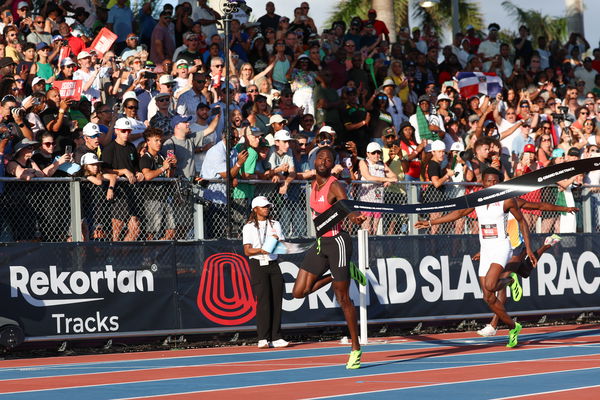
Juggling UPS shifts and Track & Field, 25-year-old star reflects on emotional $50k Grand Slam win
This UPS wokring track and field athlete just won 50,000 dollars in Grand Slam Track, now he speks his out out over it.

Who Is the Fiance of Jasmine Camacho-Quinn? Everything to Know About Donald Scott
Olympic hurdler Jasmine Camacho-Quinn is engaged to triple jumper Donald Scott—see their love story and engagement details.
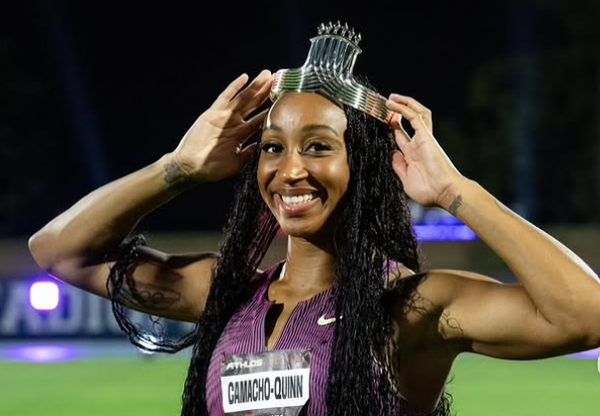
Who Are Salwa Eid Naser’s Parents? Everything to Know About Them
Meet Salwa Eid Naser’s father, the man who backed her bold move to Bahrain and shaped her journey to global track stardom
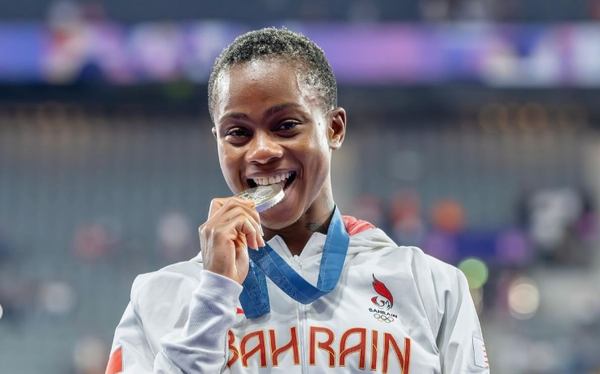
Sha’Carri Richardson’s Million Dollar Nike Deal Sees Olympic Medalist Making Heartfelt Plea to Sports Giant: “Let’s Make It Happen”
Amid season opener buzz, Sha’Carri Richardson makes a heartfelt request to her track sponsor, Nike, for a special cause.

Sidelined by Injury for 10 Months, Sha’Carri Richardson’s Training Partner Pens Emotional Note After Grand Slam Track Outing
Once the training partner of Sha’Carri Richardson, this track and field athlete, who sat out due to injury, Now opens up upon return.
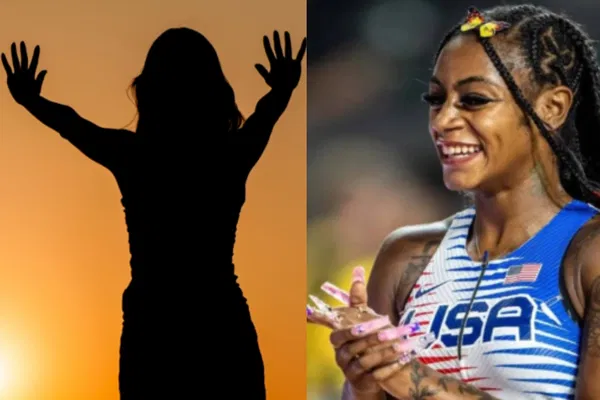
Sha’carri Richardson Makes Feelings Clear About Track and Field Career While 2025’s Season Opener Still Hangs in Limbo
Sha'Carri Richardson still hasn't made her season debut, but she has again dropped a subtle update on her season plans.

Who Are the Parents of Marco Arop? Meet Aluel Lual and Rau Arop
Here is everything you need to know about Marco Arop's parents, who fled civil war in Sudan to give a safer nest to children.
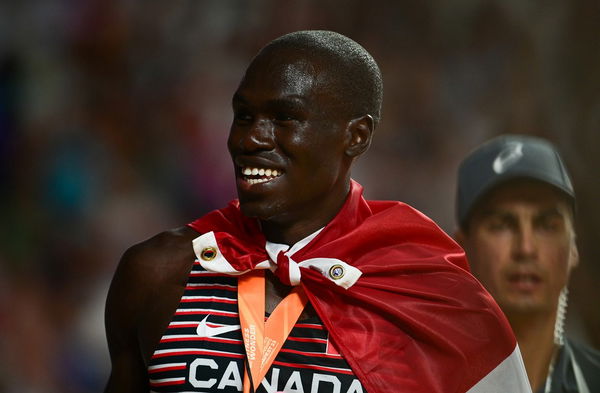
Sha’Carri Richardson Drops Cryptic 8-Word Message After Boyfriend Christian Coleman Faces Heavy Trolling Post Diamond League Setback
Christian Coleman’s tough season continues as scrutiny builds, while Sha’Carri Richardson’s cryptic social media story added a new layer.
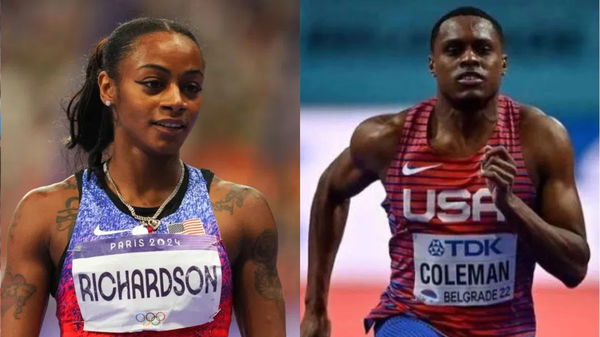
Tearful Homecoming for Melissa Jefferson As Olympic Gold Medalist Bagged $100K Win at Grand Slam Miami Edition
What more could Melissa Jefferson have asked for? A double Slam Champion title, the prize money, and a heartwarming surprise, maybe.
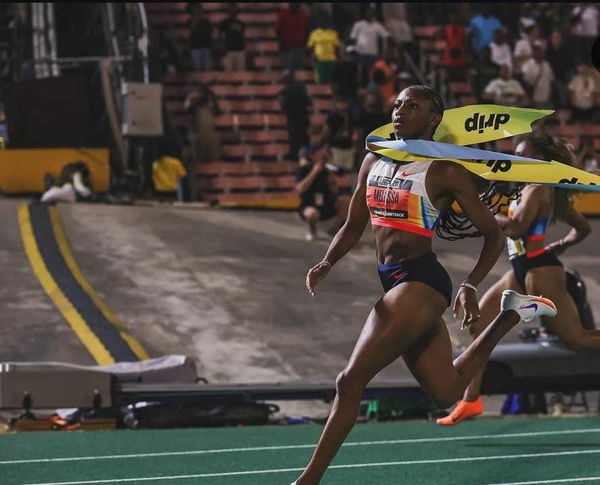
“A Hard Two Years”: Trey Cunningham Makes Emotional Confession About Track and Field Career Following Massive Grand Slam Miami Win
After posting a fine time in Grand Slam Track, Trey Cunningham reveals the price of greatness. And what is it?
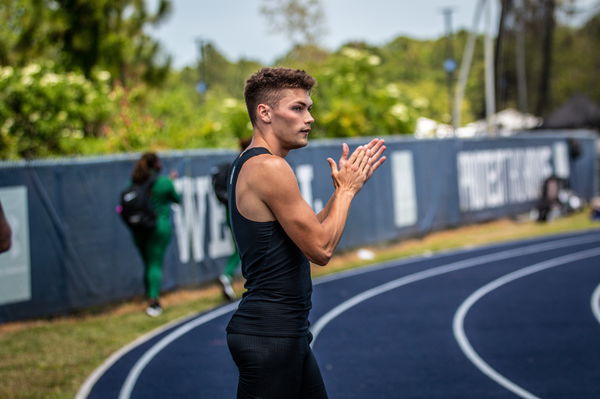
What Is the Ethnicity of Salwa Eid Naser? Why Has She Changed Her Nationality? All You Need to Know
Discover Salwa Eid Naser’s Nigerian roots, name change story, and why she now represents Bahrain in global athletics.
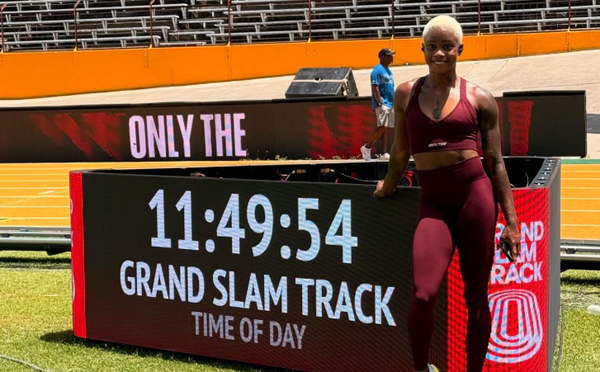
About TRACK AND FIELD
Track and Field: History and evolution of the sport
On the marks, set, go. If only the evolution of track and field were so easy. Instead, it was something that gradually happened over years of evolution.

Ancient- One of the oldest sports to have existed, the cornerstone of track and field was laid by the Greeks, where men would exhibit their athletic talents as part of celebratory events. Initially limited to foot races, stadion and diaulos were the competitions that comprised the crux of the sport, which has been around since the first Olympics in Ancient Greece, dating back to 776 B.C. Although the Romans continued the games till 394 A.D., when it was banned, the sport saw a resurgence after the decline of the Roman empire. Tracing back to the 16th and 17th centuries, foot races had become a regular sight in Europe.
Modern- The 1860s predominantly saw the wave of transformation, wherein the first championships featuring amateur men were held in England. Athletic clubs and organizations sprung up across Europe and the United States, with the Amateur Athletic Union (AAU) coming into being in 1887.
Olympic age- 1896, was when the first Modern Olympic Games were flagged off in Athens, which included track and field in the sports that debuted.
20th century- With athletes flocking from across the world to exhibit their athletic talent, track and field's stature elevated substantially. Technical developments fostered improvements in training and diet, and the track saw the likes of legends like Jesse Owens, Usain Bolt, Flo-Jo, etc coming out at the top.
What are the major events in track and field?
Track and field is a sport that covers a plethora of events under its banner. Speaking of the Olympics in particular, it features 48 events, 24 men's events and 24 women's. Care to know what they are?
| Track Discipline | Events |
| Sprint | 100m, 200m, 400m |
| Middle-distance/Long-distance | 800m, 1500m, 5000m, 10000m, 3000m steeplechase |
| Hurdles | 100m hurdles, 110m hurdles, 400m hurdles |
| Road Running | Half marathon, marathon |
| Race Walks | 20k race walk, 35k race walk |
| Relays | 4x100 relay, 4x400 relay, 4x400 relay mixed |
| Field Discipline | Events |
| Jumps | High jump, pole vault, long jump, triple jump |
| Throws | Shot put, discus throw, hammer throw, javelin throw |
| Combined Events | Heptathlon, Decathlon |
| Cross Country | |
| Mountain Running | |
| Ultra Running | |
| Trail Running |

What are the rules and regulations of track and field in major competitions like the Olympics?
Sprinting Rules
- Most of the sprinting events from 100m to 5000m conduct qualifying rounds before the finals. Usually heats, semifinals, and then the finals. The top three on the finals scoreboard take home gold, silver, and bronze.
- Sprints, hurdles, and relay races feature starting blocks, followed by the firing of a pistol to commence the race. If a runner starts before the fire, it's called a 'false start.' This will lead to disqualification.
- 100m sprints and 110m/100m hurdles comprise starts where racers are all in one line. Whereas, in the 200m, 400m, 400m hurdles, 4x100m relay, and 400m relay categories, they are placed in staggered positions.
- Running outside the allocated lanes would also lead to disqualification. If an athlete is forced to cross the lane by another one so that there is no material advantage, they will not be disqualified. The same for a person who strays out or crosses the line, and in doing so, they do not get an advantage, there will be no disqualification.
- The athlete whose torso crosses the vertical finish line plane will be declared the winner.
- For any of the relays, baton handover must not happen beyond the 20m changeover box. If yes, then this would amount to disqualification.
- The baton should not fall or touch the ground in any way.
- There are no starting blocks in these races. Also, athletes line up in an upright position. In 800m, the 8 runners will stand in staggered positions before the start. Through the first turn, they have to stay in their respective lanes, but can then break to the inside. If done very early, then can lead to disqualification.
- 1500m and the steeplechase have group starts, and no fixed lanes are allocated.
- In steeplechase, if an athlete steps aside during a barrier, they will be disqualified. They can jump above them in any way, but no part of the foot or leg should be below the horizontal plane of the upper bar while they are attempting to clear it.
- The 10,000m, marathon, race walk, decathlon, and heptathlon are events that directly conduct finals with no qualifying rounds.
- The starts happen in an upright position and involve no touching of the ground.
- Usually, these feature mass starts. However given the possibility that there are more than 12 runners in the race, they are divided into staggered groups. The first one will have 65 percent of the athletes that usually appear on a start line.
- There are no lane assignments. Track athletes can break for positions right after the commencement.
- The walker must be in contact with the ground continuously. Even the advancing leg should be straight from the instance when it comes in contact with the ground till it goes into the upright position.
- There are anything between six and nine judges in the event. And they are free to issue warnings upon violations like leg contact or perhaps a bent knee.
- If participating athletes get warnings from 3 different judges, they get disqualified. Also, if an official medical officer asks them to retire from the race, the competitors must leave.
- High jump- The jump-off must happen from one foot. And given that the athlete makes contact with the crossbar and falls off the supports, it will be counted as a failed attempt. Also, athletes will be given 3 attempts for a particular height. The option to pass a certain height and try for the next is also available. But, if there are 2 failed attempts at a single height, and the athlete skips that to move on to the next, the next should be cleared on the first try.
- Pole Vault- Participants can use a substance either on their hands or the pole to facilitate a better grip. But, tape on fingers or hands is prohibited, unless there is an open wound. Athletes are also allowed to use their poles, of any material, length, or diameter. If they break, the participants still get another go at it. However, there are three criteria for disqualification. First is when the vaulter makes the crossbar fall by touch. Second is when they move their lower hand above their upper one or their upper hand higher on the pole after leaving the ground. And third, if they steady or replace the bar while conducting the vault.
- Long Jump- The measurement for the jumps is calculated from the takeoff line to the closest break in the landing area, done by any part of the participant's body. Failed attempts happen on exceeding the takeoff line while jumping, or on taking off from outside either end of the take-off board. Or perhaps touching the ground outside the landing area closer to the take-off line, in comparison to the nearest break in the sand.
- Triple Jump- There are three stages of a triple jump- a hop, a step, and a jump, all done in the said sequence. Hope and jump have to be made from the same foot used for take-off, while the step involves the other. Failed attempts have identical criteria to the long jump. However, there is one exception, and that is when an athlete makes contact with the ground with their sleeping leg during a jump, it isn't considered a failure.
- The decathlon and heptathlon events are conducted over two consecutive days.
- In both these events, 3 attempts in the long jump, shot put, discus, and javelin throw are allowed. And a single false start in track events is allowed.
- Shot, discuss, and hammer throw are all done from within the demarcated throwing circles. While the javelin throw features a runway. Crossing either while a throwing attempt is made will count as a failed attempt.
- Also, the athletes must not exit and stay in the throwing area until the javelin or the respective implement touches the ground. And for it to be considered a valid throw, they should land within the landing zone.
- Gloves are only permitted in hammer throw, while any sort of tape is not allowed unless there is an open wound on the hands or the fingers.

via Getty
EUGENE, OREGON - JUNE 18: Ryan Crouser competes in the Men's Shot Put final during day one of the 2020 U.S. Olympic Track & Field Team Trials at Hayward Field on June 18, 2021 in Eugene, Oregon. (Photo by Andy Lyons/Getty Images)
What are the major track and field championships?
Some of the pivotal athletic competitions include-
- The Athletics World Championships (Once every 2 years)
- Olympic Games (Once every 4 years)
- Commonwealth Games (Once every 4 years)
- World Indoor Championships (Once every 2 years)
- World Diamond League Meetings (Every year)
- World Athletics Relays (Biennial)
- Marathon Majors (Every year)
- World Athletics Cross Country Championships (Biennial)
- New York Marathon (Every year)
Who are the greatest track and field stars of all time?
Here are some of the most decorated track and field athletes of all time:
| Name | Country | Event | Olympic medals | Personal best |
| Paavo Nurmi | Finland | Middle and Long Distance Runner | 12 medals- 9G, 3S | 10000m - 30:06.2h 3000m - 8:20.4h 5000m- 14:28.2h |
| Carl Lewis | United States
| 100m,200m, Long Jump, 4x100m relay | 10 medals- 9G, 1S | Long Jump- 8.87 100m- 9.86 200m- 19.75 |
| Usain Bolt | Jamaica | 100m, 200m, 4x100m relay | 8 medals- 8G | 100m- 9.58 (WR, AR) 200m- 19.19 (WR, AR) |
| Jesse Owens | United States | 100m, 200m, Long Jump, 4x100m relay | 4 medals- 4G | 100m- 10.2h 200m- 20.7h 4x100m relay- 39.8h Long Jump- 8.13 |
| Allyson Felix | United States | 200m, 4x400m relay, 4x100m relay, 400m | 11 medals- 7G, 3S, 1B | 200m- 21.69 400m- 49.26 4x100m relay- 40.82 4x400m relay- 31.16.85 |
| Florence Griffith Joyner | United States | 100m, 200, 4x100m relay, 4x400m relay | 5 medals- 3G, 2S | 100m- 10.49 200m- 21.34 |

via Getty
Usain Bolt of Jamaica reacts as he wins the Olympic mens 200m final in a new world record time in the Birds Nest stadium, Beijing on August 20th 2008 in Beijing, China (Photo by Tom Jenkins/Getty Images). An image from the book "In The Moment" published June 2012
| Jackie Joyner-Kersee | United States | Heptathlon, Long Jump | 6 medals- 3G, 1S, 2B | Heptathlon- 1331 Long Jump- 7.49 |
| Bob Beamon | United States | Long Jump | 1 medal- 1G | Long Jump- 8.90 |
| Javie Sotomayor | Cuba | High Jump | 2 medals- 1G, 1S | High Jump- 2.45 (WR) |
| Jan Zelezny | Czechia | Javelin Throw | 4 medals- 3G, 1S | Javelin Throw- 98.48 (WR) |
| Haile Gebrselassie | Ethiopia | Long Distance Runner | 2 medals- 2G | 10000m- 26:22.75 5000m- 12:39.36 |
| AI Oerter | United States | Discus Throw | 4 medals- 4G | Discus Throw- 69.46 |
| Sergey Bubka | Ukraine | Pole Vault | 1 medal- 1G | Pole Vault- 6.15 |

